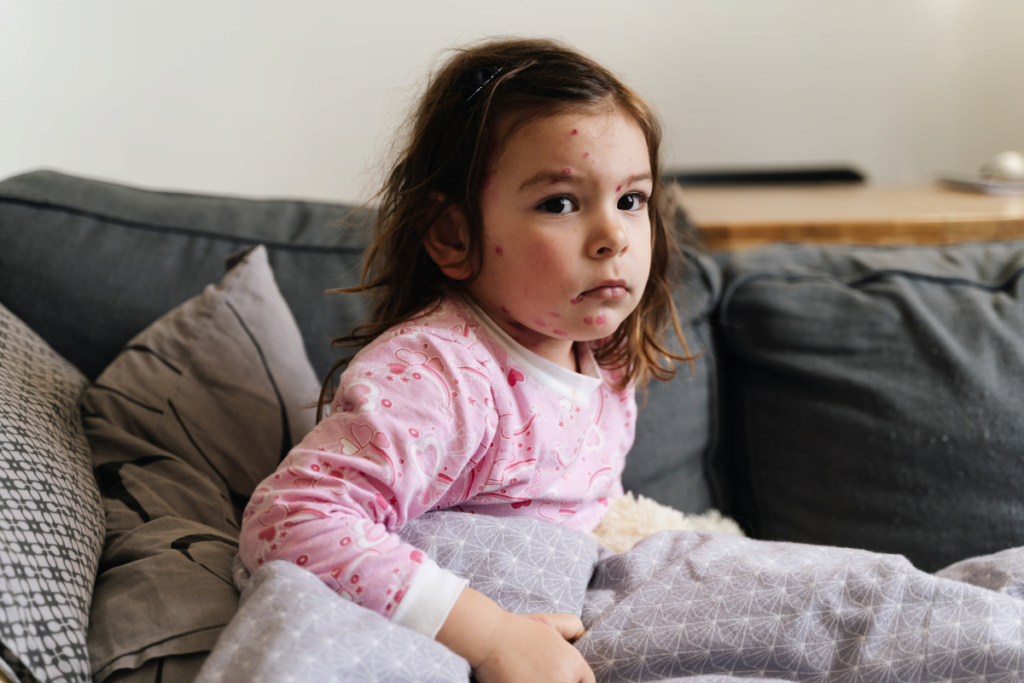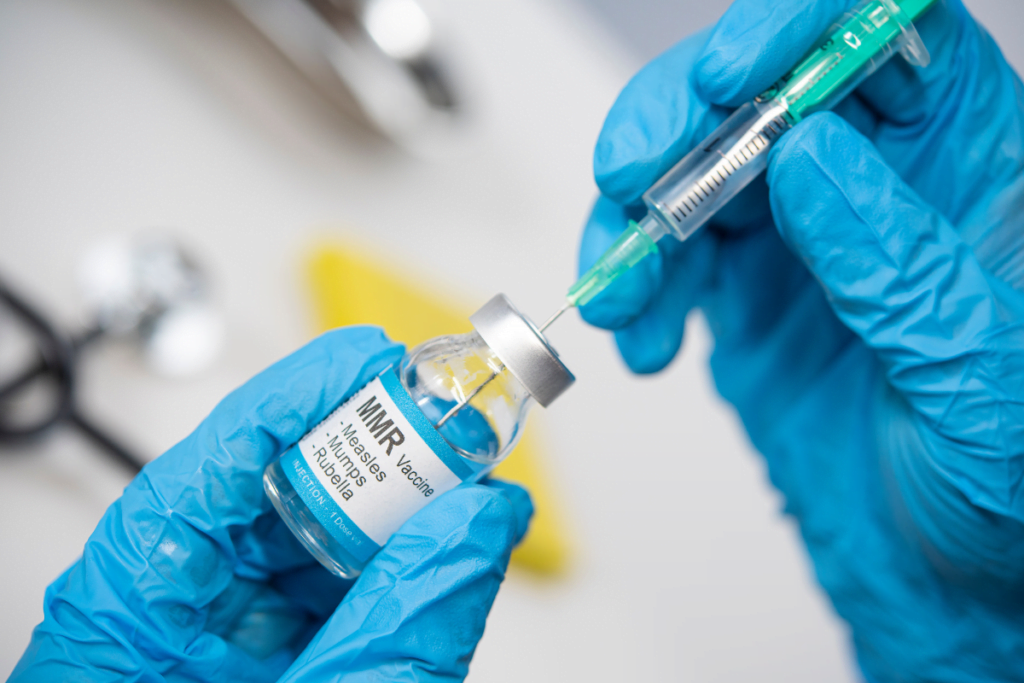The Rise in measles cases
The rise in measles cases is closely correlated with a decline in vaccination rates. As vaccination rates decrease, particularly among certain communities or regions. The collective immunity or “herd immunity” against measles weakens, making it easier for the virus to spread. Measles is highly contagious, and even a small decrease in vaccination coverage can lead to outbreaks.
Several factors contribute to the drop in vaccination rates. Vaccine hesitancy, fueled by misinformation and mistrust in vaccines, plays a significant role. Some individuals or parents may be influenced by unfounded concerns about vaccine safety or efficacy, despite overwhelming scientific evidence supporting the safety and effectiveness of vaccines, including the measles vaccine.

Additionally, access barriers to healthcare services, including vaccination services, can contribute to lower vaccination rates. Lack of awareness about the importance of vaccination, inadequate healthcare infrastructure, and socioeconomic disparities can further exacerbate these challenges.
It’s crucial to address the root causes of declining vaccination rates through targeted interventions. This includes educating the public about the importance of vaccination, debunking myths and misinformation surrounding vaccines, improving access to vaccination services, and building trust in healthcare providers and public health authorities.
Efforts to combat vaccine hesitancy and increase vaccination coverage must be multifaceted and community-driven. Collaboration between healthcare providers, public health agencies, community organizations, policymakers, and other stakeholders is essential to effectively address the issue and prevent future outbreaks of measles and other vaccine-preventable diseases.
Why are measles cases rising?
Measles cases in the US have been rising due to several factors:
Decrease in Vaccination Rates:
One significant reason for the resurgence of measles is the decline in vaccination rates. Some communities have seen a decrease in the number of people getting vaccinated against measles due to various reasons such as vaccine hesitancy, misinformation about vaccines, and lack of access to healthcare.
Travel and Global Spread:
Measles is highly contagious, and travel can facilitate its spread. Cases can be imported from countries where measles is still common, and if vaccination rates are low, outbreaks can occur easily.
Community Immunity Breakdown:
Measles outbreaks can occur when the proportion of unvaccinated individuals in a community reaches a certain threshold, leading to a breakdown in herd immunity. This means that even individuals who have been vaccinated can be at risk if they are surrounded by a large number of unvaccinated people.
Social and Environmental Factors:
Socioeconomic factors such as poverty, lack of access to healthcare, and crowded living conditions can also contribute to the spread of measles, as these conditions can make it easier for the virus to spread.
Misinformation and Vaccine Hesitancy:
The spread of misinformation about vaccines, particularly on social media platforms, has led to vaccine hesitancy among some individuals and communities. This hesitancy can result in lower vaccination rates and an increased risk of disease outbreaks.
Efforts to combat measles include improving vaccination coverage, educating the public about the importance of vaccination, addressing misinformation, and strengthening healthcare systems to ensure access to vaccines and healthcare services.
What impact did vaccination have on measles?
Vaccination has had a significant impact on measles:
Drastic Reduction in Cases:
Before the introduction of the measles vaccine, measles was a widespread and highly contagious disease, causing millions of cases and thousands of deaths each year in the United States. However, with the introduction and widespread use of the measles vaccine, the number of cases has decreased dramatically.
Prevention of Outbreaks:
Vaccination has played a crucial role in preventing large-scale outbreaks of measles. By vaccinating a large portion of the population, herd immunity is achieved, which reduces the likelihood of the virus spreading within communities.
Decline in Mortality:
The measles vaccine has significantly reduced the mortality associated with measles infection. Before the vaccine, measles was a leading cause of death among children worldwide. However, vaccination has led to a substantial decrease in measles-related deaths.
Prevention of Complications:
Measles can lead to severe complications, including pneumonia, encephalitis (inflammation of the brain), and blindness. Vaccination not only prevents measles infection but also reduces the risk of these serious complications.
Cost Savings:
Vaccination against measles has resulted in significant cost savings by reducing healthcare expenditures associated with treating measles cases and complications, as well as the economic burden of lost productivity due to illness.
Overall, vaccination has been instrumental in controlling and nearly eliminating measles as a public health threat in many parts of the world, including the United States. Continued efforts to maintain high vaccination coverage rates are essential to sustain these achievements and prevent measles resurgence.
What is the primary vaccine failure rate for measles?
The primary vaccine failure rate for measles is generally estimated to be around 2-5%. This means that approximately 2-5% of individuals who receive the recommended two doses of the measles vaccine may still remain susceptible to measles infection despite vaccination.
However, even in cases where the vaccine fails to provide complete protection, individuals who have been vaccinated typically experience milder symptoms and are less likely to suffer from severe complications compared to unvaccinated individuals. Additionally, achieving high vaccination coverage rates in a population helps to reduce the overall risk of measles transmission, including to those who may have experienced primary vaccine failure.



